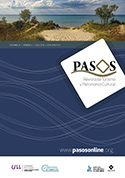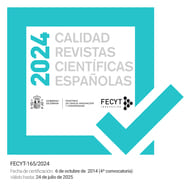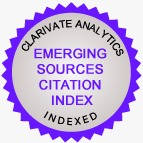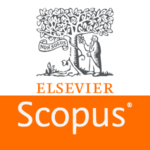Adaptação ao espanhol da escala NES: segmentação dos turistas com base nas motivações ambientais
DOI:
https://doi.org/10.25145/j.pasos.2018.16.056Palavras-chave:
ecoturista, turismo baseado na natureza, turismo sustentável, escala NES, nálise factorial confirmatória, adaptação de questionários.Resumo
A escala NES é um questionário concebido para a segmentação turística com base nos interesses e motivação ambiental. Permite a identificação de turistas sustentáveis, turistas orientados para a natureza, eco-turistas e turistas de massa. Neste estudo adaptamos a escala NES à língua espanhola e aplicámo-la a uma amostra de 149 turistas espanhóis. A análise de itens e factores permitiu-nos confirmar o alinhamento com o modelo proposto de tripla base de Natureza, conhecimento e sustentabilidade. Os coeficientes de coerência interna e de adequação do modelo foram satisfatórios. As implicações teóricas dos resultados obtidos são discutidas e as aplicações práticas em escala propostas para pesquisadores e profissionais de turismo. As limitações da presente pesquisa também são destacadas com sugestões de vertentes futuras relevantes de investigação turística relacionada.
Downloads
##plugins.generic.pfl.publicationFactsTitle##
##plugins.generic.pfl.reviewerProfiles## Indisp.
##plugins.generic.pfl.authorStatements##
##plugins.generic.pfl.indexedIn##
-
##plugins.generic.pfl.indexedList##
- ##plugins.generic.pfl.academicSociety##
- PASOS. Revista de Turismo y Patrimonio Cultural
- ##plugins.generic.pfl.publisher##
- Instituto Universitario de Investigación Social y Turismo. Universidad de La Laguna (España) - Instituto Universitario da Maia ISMAI (Portugal)
Referências
Alegre, J., & Garau, J. 2009. Tourist satisfaction indices. A critical approach/Índices de satisfacción turística. Una aproximación crítica. Investigaciones regionales, (14), 5.
Amaral, F., Tiago, T., & Tiago, F. 2014. User‑generated content: tourists’ profiles on Tripadvisor. International Journal of Strategic Innovative Marketing, 1(3), 137‑145.
Anderson, C. 2004. The Long Tail Forget squeezing revenue from a few megahits at the top of the charts. The future of entertainment is in the millions of niche markets at the shallow end of the bitstream. Wired‑San Francisco‑, 12(10), 170‑177.
Andrades‑Caldito, L., Sánchez‑Rivero, M., & Pulido‑Fernández, J. I. 2013. Differentiating competitiveness through tourism image assessment: an application to Andalusia (Spain). Journal of Travel Research, 52(1), 68‑81.
Ap, J., & Crompton, J. L. 1998. Developing and testing a tourism impact scale. Journal of travel research, 37(2), 120‑130.
Buhalis, D. (2000). Marketing the competitive destination of the future. Tourism management, 21(1), 97‑116.
Buhalis, D., & Law, R. 2008. Progress in information technology and tourism management: 20 years on and 10 years after the Internet—The state of eTourism research. Tourism management, 29(4), 609‑623.
Cohen, E. 2005. Principales tendencias en el turismo contemporáneo. Política y sociedad, 42(1), 11‑24.
Craigwell, R. 2007. Tourism competitiveness in small island developing states(No. 2007/19). Research paper, UNU‑WIDER, United Nations University (UNU).
Croes, R. 2011. Measuring and explaining competitiveness in the context of small island destinations. Journal of Travel Research, 50(4), 431‑442.
Cronbach, L. J. 1951. Coefficient alpha and the internal structure of tests. Psychometrika, 16(3), 297‑334.
Dorta‑Afonso, D., & Hernández‑Martín, R. 2015. Subnational tourism competitiveness performance. The Canary Islands vs. the German Länder. European Journal of Tourism Research, 10, 51.
Dwyer, L., & Kim, C. 2003. Destination competitiveness: determinants and indicators. Current issues in tourism, 6(5), 369‑414.
Enright, M. J., & Newton, J. 2004. Tourism destination competitiveness: a quantitative approach. Tourism management, 25(6), 777‑788.
Filieri, R., Alguezaui, S., & McLeay, F. 2015. Why do travelers trust TripAdvisor? Antecedents of trust towards consumer‑generated media and its influence on recommendation adoption and word of mouth. Tourism Management, 51, 174‑185.
Hair, J. F., Black, W. C., Babin, B. J. y Anderson, R. E. 2010. Multivariate data analysis. Upper Saddle River, NJ: Pearson‑Prentice Hall.
Hassan, S.S. 2000. Determinants of market competitiveness in an environmentally sustainable tourism industry. Journal of Travel Research, 38(3), 239‑245.
Hong, W.C. 2008. Competitiveness in the tourism sector. A comprehensive approach from economic and management points. Heidelberg: Physica‑ Verlag.
Hu, W. & Wall, G. 2005. Environmental management, environmental image and the competitive tourist attraction. Journal of Sustainable Tourism, 13(6), 617‑635.
Jacob, M., Florido C. & Aguilo, E. 2010. Environmental innovation as a competitiveness factor in the Balearic Islands. Tourism Economics, 16(3), 755‑ 764.
Juric, B., Cornwell, T. B., & Mather, D. 2002. Exploring the usefulness of an Ecotourism Interest scale. Journal of Travel Research, 40(3), 259‑269.
Kozak, M. 2002. Comparative analysis of tourist motivations by nationality and destinations. Tourism management, 23(3), 221‑232.
López Bonilla, J. M., Boerasu, A. E., & López Bonilla, L. M. 2014. Perfiles de los visitantes en el turismo de naturaleza: análisis exploratorio en el entorno de Doñana. International journal of world of tourism, 1(1), 17‑25.
Mazanec, J. A., Wöber, K., & Zins, A. H. 2007. Tourism destination competitiveness: from definition to explanation?. Journal of Travel Research, 46(1), 86‑95.
Mehmetoglu, M. 2005. A case study of nature‑based tourists: Specialists versus generalists. Journal of Vacation Marketing, 11(4), 357‑369.
Mehmetoglu, M. 2010. Accurately identifying and comparing sustainable tourists, nature‑based tourists, and ecotourists on the basis of their environmental concerns. International Journal of Hospitality & Tourism Administration, 11(2), 171‑199.
Miguéns, J., Baggio, R., & Costa, C. 2008. Social media and tourism destinations: TripAdvisor case study. Advances in Tourism Research, 26(28), 26‑28.
O’Reilly, T. 2005. What is Web 2.0? Design patterns and business models for the next generation software.
Pan, B., & Li, X. R. 2011. The long tail of destination image and online marketing. Annals of Tourism Research, 38(1), 132‑152
Poon, A. 1993.Tourism, technology, and competitive strategy. Wallingford: CAB International
Ritchie, J.R.B. & Crouch, G.I. 2003.The competitive destination: A sustainable tourism perspective. Wallingford: CAB.
Romao, J., Guerreiro, J., & Rodrigues, P. M. 2013. Territorial Differentiation, Competitiveness and Sustainability of Tourism. In Quantitative Methods in Tourism Economics (pp. 271‑285). Physica‑Verlag HD.
Wang, N. 1999. Rethinking authenticity in tourism experience. Annals of tourism research, 26(2), 349‑370.
Willian, E., & Martell, E. P. 2008. Turismo 2.0: La web social como plataforma para desarrollar un ecosistema turístico basado en el conocimiento. Estudios turísticos, (178), 113‑133.
World Travel and Tourism Council 2016. Travel and Tourism Economic Impact 2016.
Downloads
Publicado
Como Citar
Edição
Seção
Licença
Confirmo que o trabalho é original (de minha/nossa autoria), e que não será submetido a outras revistas ou publicações até a resolução final do processo de revisão em PASOS, RTPC.
Autorizo a publicação do meu trabalho por PASOS, PSTN de acesso livre e aberto em qualquer dos formatos que considere oportuno, por tempo indeterminado e como colaboração não remunerada.
Da mesma forma, o(s) autor(es) entende(m) que o trabalho publicado pode ser vinculado ou depositado em qualquer servidor ou incluído em outras publicações (republicação), desde que o novo local e/ou a nova edição façam referência à publicação original e reconheçam a autoria e propriedade de direitos autorais das publicações PASOS RTPC.
Os autores entendem que uma verificação de plágio autoplágio será realizada, e o artigo poderá ser removido a qualquer momento do fluxo editorial.










